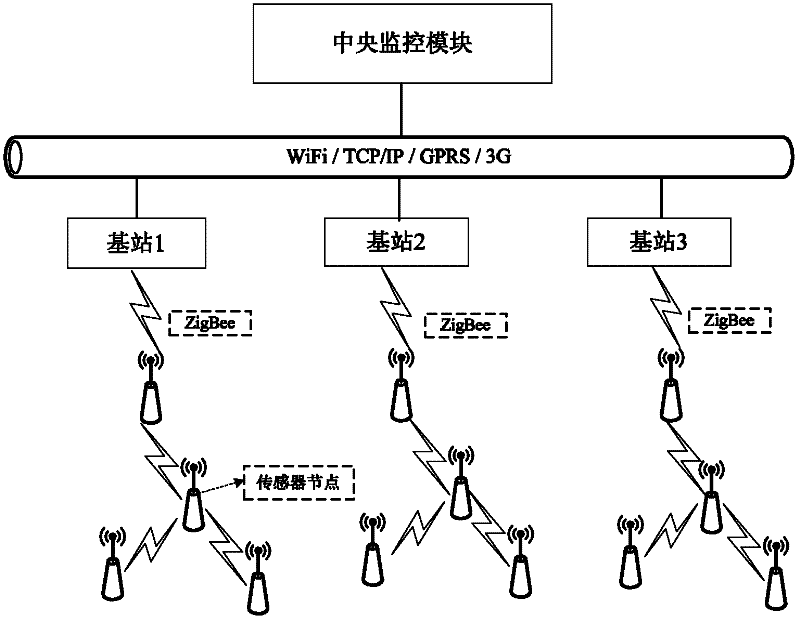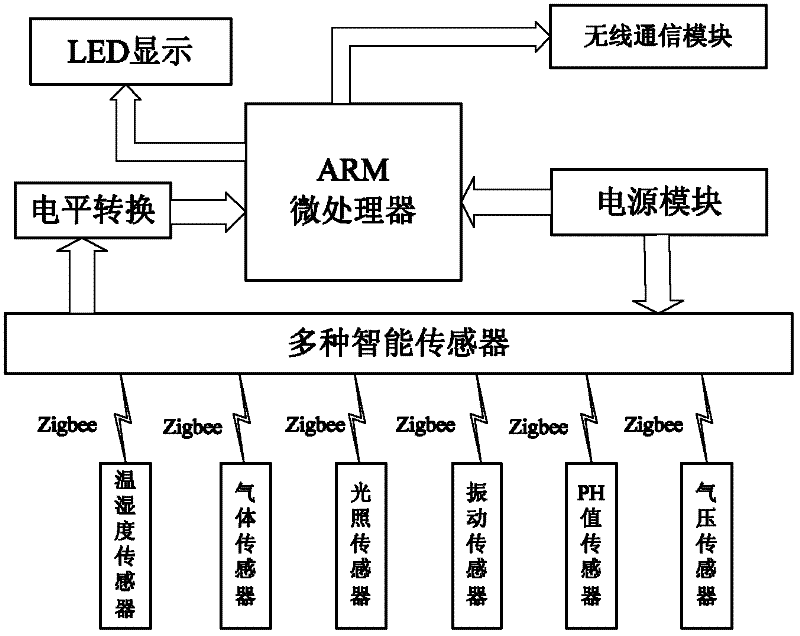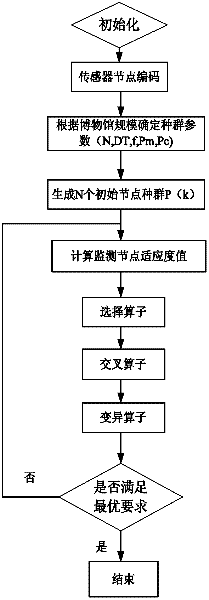Deployment method of wireless sensor nodes of environmental monitoring system in museum internet of things
An environmental monitoring system and wireless sensor technology, applied in wireless communication, network topology, advanced technology, etc., can solve the problems of difficult installation and maintenance, node redundancy, high system cost, etc., to avoid difficulties in the arrangement of collection points and strong self-organization Effects with scalability and flexible application
- Summary
- Abstract
- Description
- Claims
- Application Information
AI Technical Summary
Problems solved by technology
Method used
Image
Examples
Embodiment Construction
[0037] The present invention will be further described below in conjunction with drawings and embodiments.
[0038] Such as figure 1 As shown, the museum Internet of Things environment monitoring system involved in the present invention includes three levels of wireless sensor nodes, central control base stations, and central monitoring modules. The sensor nodes are connected with the central control base station through wireless communication, and the central control base station is connected with the central monitoring module through Internet / GPRS.
[0039] Such as figure 2 Shown, be that the wireless sensor node of the present invention comprises: processor module, Zigbee module, signal converter, power supply module, communication interface, and multiple intelligent sensor (temperature and humidity sensor, CO 2 , SO 2 , NO 2 Gas sensor, light sensor, vibration sensor, PH value sensor, air pressure sensor, etc.). Sensor nodes collect data, pass through a signal conver...
PUM
 Login to View More
Login to View More Abstract
Description
Claims
Application Information
 Login to View More
Login to View More - R&D
- Intellectual Property
- Life Sciences
- Materials
- Tech Scout
- Unparalleled Data Quality
- Higher Quality Content
- 60% Fewer Hallucinations
Browse by: Latest US Patents, China's latest patents, Technical Efficacy Thesaurus, Application Domain, Technology Topic, Popular Technical Reports.
© 2025 PatSnap. All rights reserved.Legal|Privacy policy|Modern Slavery Act Transparency Statement|Sitemap|About US| Contact US: help@patsnap.com



